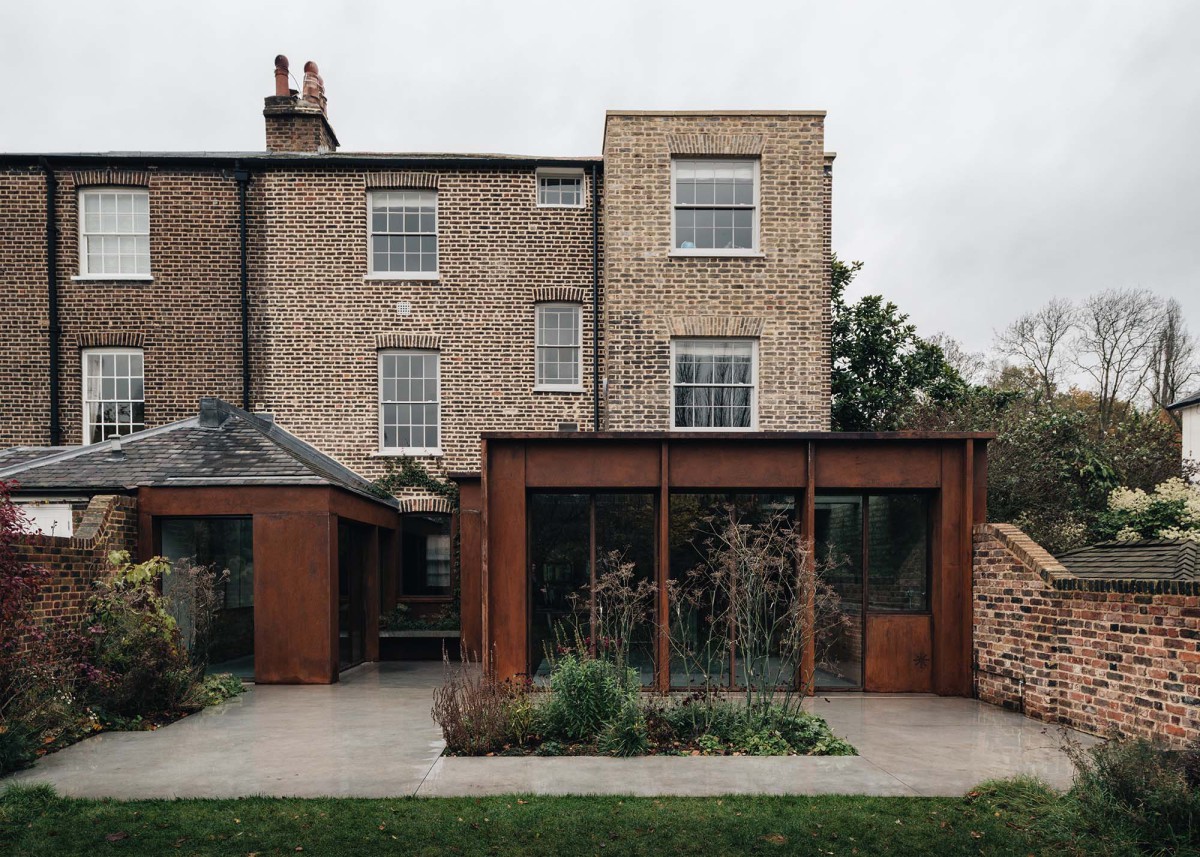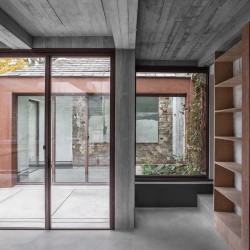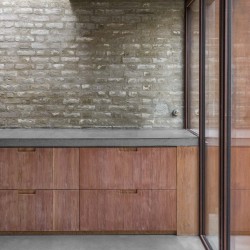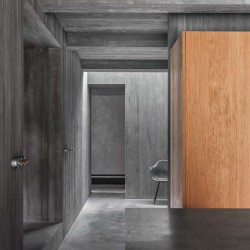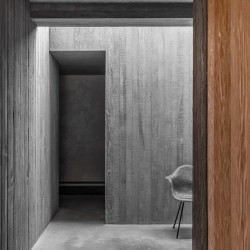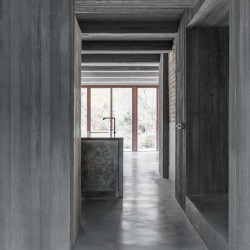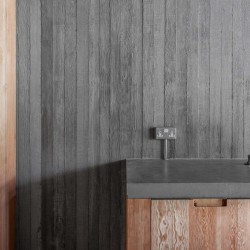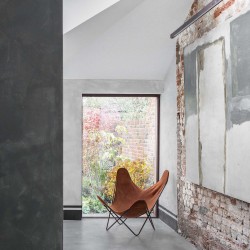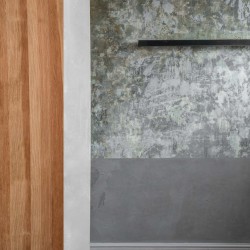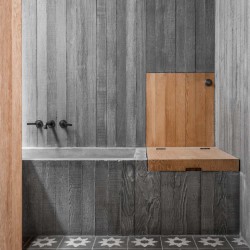McLaren Excell . Photos © Simone Bossi
This project involved the restoration of, and extension to, a Listed semi-detached early 18th century Hampstead village ‘cottage’, in London.
The original cottage footprint was modest, and the house had been extended to the side in the 1950s. The unusual layout resulted in two storeys being presented to the street, with an additional basement storey dropping down to garden level at the rear.
Our approach to the building had to be mindful to the sensitivity surrounding its Listing, whilst achieving an increase in floor area and the wholesale re-furbishment of the property for a family. The historic development to one side of the house during the twentieth century created a clear opportunity to develop a scheme of two halves: one side requiring the careful restoration of a well-preserved Regency house, with the other side allowing us to design free from the restrictions of the Listed Building status.
We secured permission to remove the 1950s side extension across all three stories, and replace it with a bold, confident scheme which extends into the garden at lower ground level with a corten-clad rear extension, and under the front car port with a subterranean amenity space. Externally, the facades to the side have been retained or re-constructed to sit harmoniously alongside the original Regency house.
Internally, however, there is a very different and distinct character: bold, emphatic and unapologetic in the use of raw materials. Heavily shuttered insitu concrete walls and coffered ceilings lend a heavy, brooding quality to the interior spaces. The shuttered surfaces provide a canvas for the fall of light and cast of shadow, and instil a gentle rhythm to the spaces they adorn. There is a heavy sense of tactility and of texture, and the massive quality of the concrete exudes an calm and authoritative presence. Polished concrete floors continue this theme, whilst all the internal joinery has been constructed from re-used Douglas Fir shuttering boards – providing a visual, and textural, consistency throughout the interior spaces. Rusted corten steel doors and external cladding complete the palette of natural, robust materials, with the oxidised surface of the corten contrasting beautifully with the abundance of dull, grey concrete.
The restoration of the Regency house required a more delicate touch. We carefully peeled back the layers of decorations and coverings to the walls and floors, revealing the original fabric of the building as it was in the 1820s. The condition of the plaster and woodwork enabled us to leave these finishes in their raw state, with minimal repair work required. The re-introduction of skirting boards and a ‘datum’ of limewash paint provided much-needed structure to the rooms and stairwell, whilst elsewhere we carried out a programme of sensitive restoration work to the cornicing, panelling, doorways and windows.
The redeveloped side of the house now sits strongly juxtaposed against the restored 1820 interiors of the original ‘cottage’. In their own way, both have a strong sense of texture, allowing them to sit happily side-by-side despite the stylistic gulf between them; they share a certain materiality and give a similar expression to light – two very different, yet complimentary approaches locked in a constant dialogue.
_
DOWNSHIRE HILL
LOCATION:
Hampstead
TYPE:
Residential

